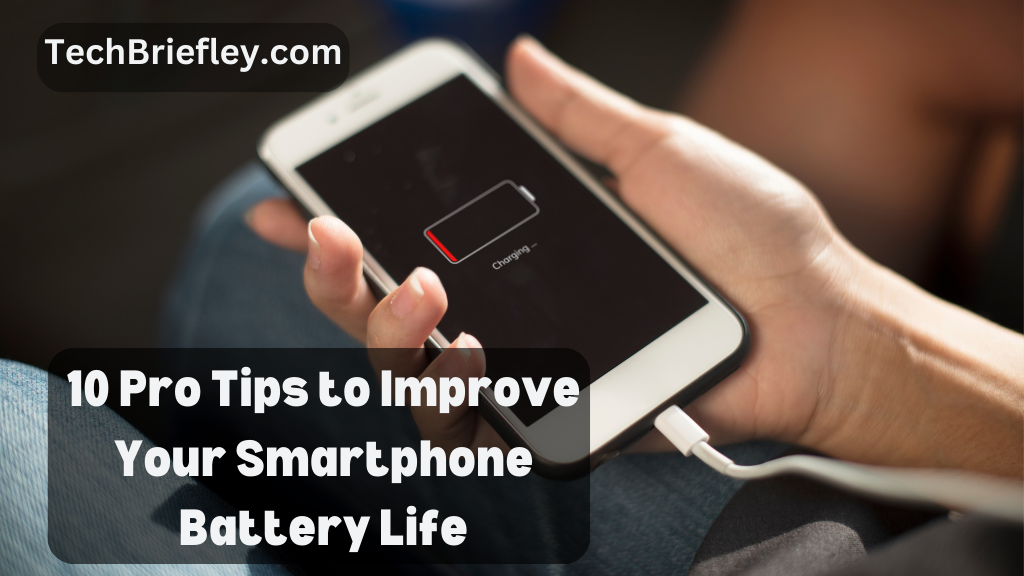In today’s busy life, our smartphones are like our trusty companions, helping us stay connected, entertained, and organized. But there’s one problem that can leave us feeling stuck – when our phone’s battery starts to run low. So, how can you improve your smartphone’s battery life? Let’s explore ten pro tips to keep your phone powered up for longer.
1. Adjust Screen Brightness
Your smartphone’s display is a power-hungry beast. To save battery, adjust your screen brightness manually or enable adaptive brightness. This feature adjusts the brightness based on your surroundings, ensuring your screen isn’t excessively bright when it doesn’t need to be. Lowering the screen brightness can have a significant impact on your battery life.
2. Activate Battery Saver Mode
Most smartphones offer a battery saver or low-power mode. When enabled, this mode restricts background processes, reduces screen brightness, and limits notifications to essential apps. It’s an excellent way to make your battery last longer during critical moments. You can often customize the settings of this mode to strike the right balance between battery life and functionality.
3. Manage App Background Activity
Apps running in the background can drain your battery without you even realizing it. To prevent this, go to your phone’s settings and review which apps are allowed to run in the background. Disable background activity for apps that you don’t need constantly refreshing. Additionally, some operating systems provide advanced battery optimization features that can intelligently manage background apps.
4. Use Dark Mode
Dark mode isn’t just trendy; it’s also an excellent way to save battery life on smartphones with OLED or AMOLED screens. Dark themes use less power because individual pixels are turned off in black areas, unlike in bright themes where all pixels are illuminated. Many popular apps and operating systems now offer dark mode options, so be sure to enable it.
5. Turn Off Unnecessary Features
Features like Bluetooth, GPS, and Wi-Fi are convenient but can consume significant power when left on unnecessarily. Turn them off when you’re not actively using them. Additionally, switching to airplane mode when you don’t need connectivity can save a substantial amount of battery life. If your phone supports it, you can also enable Wi-Fi calling to conserve cellular network battery usage.
6. Keep Apps and Software Updated
App developers often release updates to improve efficiency and fix bugs. Keeping your apps and operating system up to date can help optimize battery usage. Additionally, newer versions of Android and iOS tend to have improved battery management features. Make it a habit to check for app updates regularly, and enable automatic updates if possible.
7. Monitor Battery Usage
Most smartphones have built-in battery usage tools that show which apps are consuming the most power. Use these tools to identify energy-hungry apps and consider alternatives or adjust their settings to reduce their impact on your battery life. You can often find these battery usage statistics in the phone’s settings under “Battery” or a similar category.
8. Disable Vibrations
Vibrations for notifications, calls, and feedback can be convenient, but they consume more power than you might think. If you can do without them, disabling vibrations can contribute to better battery life. Instead, rely on ringtone or silent mode for notifications.
9. Optimize Push Email
Email apps that use push notifications to deliver emails instantly can be a significant drain on your battery. Consider adjusting the sync frequency to check for new emails less frequently, like every 15 or 30 minutes, rather than immediately. You’ll still receive your emails promptly, but your phone won’t need to constantly connect to the server.
10. Limit Widgets and Live Wallpapers
Widgets and live wallpapers might be eye-catching, but they can also be battery-draining apps, especially if they constantly update or animate. Be selective about the widgets you use on your home screen and opt for static wallpapers to conserve battery.
Bonus Tip: Charging Practices
While not directly related to preserving battery life, how you charge your phone can impact its long-term health:
- Use a high-quality charger and cable to ensure safe and efficient charging.
- Avoid extreme temperatures while charging, as excessive heat or cold can harm your battery.
- Charge your phone when it drops to around 20-30% battery rather than waiting for it to reach critically low levels.
- Don’t let your phone fully discharge regularly; aim for partial charge cycles to keep your battery in good condition.
Conclusion
Improving your smartphone’s battery life involves a combination of adjusting settings, managing apps, and adopting good charging practices. By following these ten pro tips, you can make your phone battery last longer and reduce the frustration of a dead phone when you need it most. Remember, a little extra care and attention to your smartphone’s battery can go a long way in keeping it healthy and powered up.

